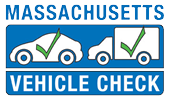Vehicle Inspection and Maintenance Tips
In this Section
Inspection & Maintenance Tips
Inspection Tips
To avoid end-of-the-month lines and shorten the time it takes for your vehicle to be inspected:
Go in for your inspection around midday during the work week and early in the month when it tends to be less busy. Note: Inspection stations tend to have more traffic on weekends, early weekday mornings and late weekday afternoons.
Ensure your vehicle is safe to operate so that your safety inspection and emissions test may be safely conducted.
If your OBD-equipped vehicle has a covered or otherwise obstructed diagnostic link connector (DLC), please open the cover or remove the obstruction before arriving at the inspection station. Consult the owner's manual for location and instructions.
If your OBD-equipped vehicle has recently been serviced, or if the battery has been disconnected, please drive the vehicle for several days before bringing it in for an inspection.
Contact the inspection station of your choice to confirm the types of payment it will accept
Vehicle Maintenance Tips
Check all tires for proper inflation pressure on a monthly basis. Tires lose pressure every month due to normal leakage. Tire pressure information can usually be found on the inside of the driver’s door.
Make sure your spare tire is properly inflated.
Keep your battery terminals tight, clean and dry.
Even though most cars today are equipped with maintenance-free batteries, they still require periodic attention. Checking the state of charge and keeping terminal connectors secure and free of corrosion will ensure quick winter starts.
For better stopping and handling control, have all brakes and suspension components inspected at least once a year or every 12,000 miles. Have any defective or worn out components replaced promptly.
Keep your windshield washer fluid topped and use washer fluid with antifreeze.
Let your engine idle only briefly. Anything more wastes fuel, increases engine wear, reduces oil life and puts extra emissions into the environment.
Check your engine oil level often. Following the suggested oil change interval will improve cold-weather starting and provide better fuel economy and performance. Check your service information system or owner's manual for proper oil type and suggested oil-change interval.
When refueling the vehicle, always turn the engine off. Do not add more fuel or top off the tank after the pump has shut off. The evaporative control system needs to have the airspace left over after the pump has shut off in the tank to function properly.
If the Check Engine or Service Engine Light stays lit for more than one week, your vehicle has an emissions-related problem that could affect its performance or fuel economy. You should get your vehicle serviced by a trained repair technician.
If the Check Engine or Service Engine Light blinks or flashes while the engine is running, your vehicle has a serious emissions-related problem that needs immediate attention in order to prevent permanent catalytic converter damage.
